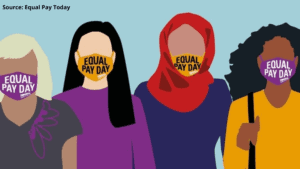Women Deserve Equal Pay… and nothing less.
#EqualPayDay symbolizes the day when, on average, women will have earned the same amount that white men earned at the end of 2020. Started by the National Committee on Pay Equity (NCPE) in 1996, the goal of this day is to raise awareness around the gender wage gap that affects the earnings of women in the workforce.
Since then, other Equal Pay Days have been created to highlight the even larger wage disparities that mothers and women of color face in comparison to the earnings of white men.
2021 Equal Pay Days
- Asian American and Pacific Islander Women’s Equal Pay Day is March 9. Asian American and Pacific Islander women are paid 85 cents for every dollar paid to white men
- All Women’s Equal Pay Day is March 24. Women working full time and year round are paid on average 82 cents for every dollar paid to a man who works full time and year round.
- Mother’s Equal Pay Day is June 4. Mothers are paid 70 cents for every dollar paid to fathers.
- Black Women’s Equal Pay Day is August 3. Black women are paid 63 cents for every dollar paid to white men.
- Native American Women’s Equal Pay Day is September 8. Native women are paid 60 cents for every dollar paid to white men.
- Latinx Women Equal Pay Day is October 21. Latinas are paid 55 cents for every dollar paid to white men.
It's time to take a stand against pay inequity and discrimination. We need #EqualPay for women everywhere.
Take Action
The first step in taking action against pay inequity and discrimination is to educate yourself about the various income gaps between men and women. While there has been progress in addressing gender and racial pay gaps, there is still a long way to go. The current global pandemic has disproportionately impacted women which has negatively affected women’s positions and earnings in the workplace. This impact has set women back over 10 years.
When armed with more information and resources, women can better negotiate salaries for themselves to help improve the financial security of themselves and their families. Learn more here.

